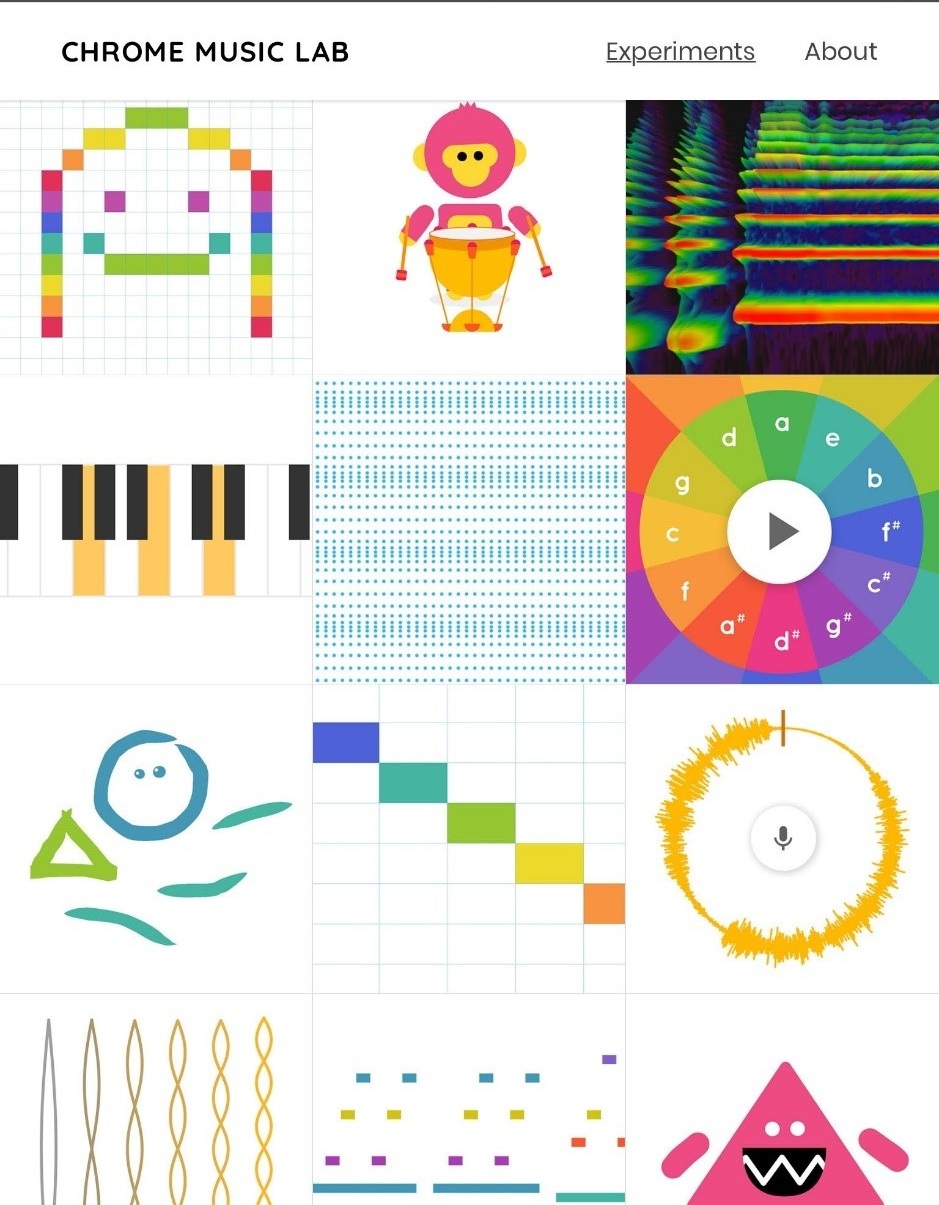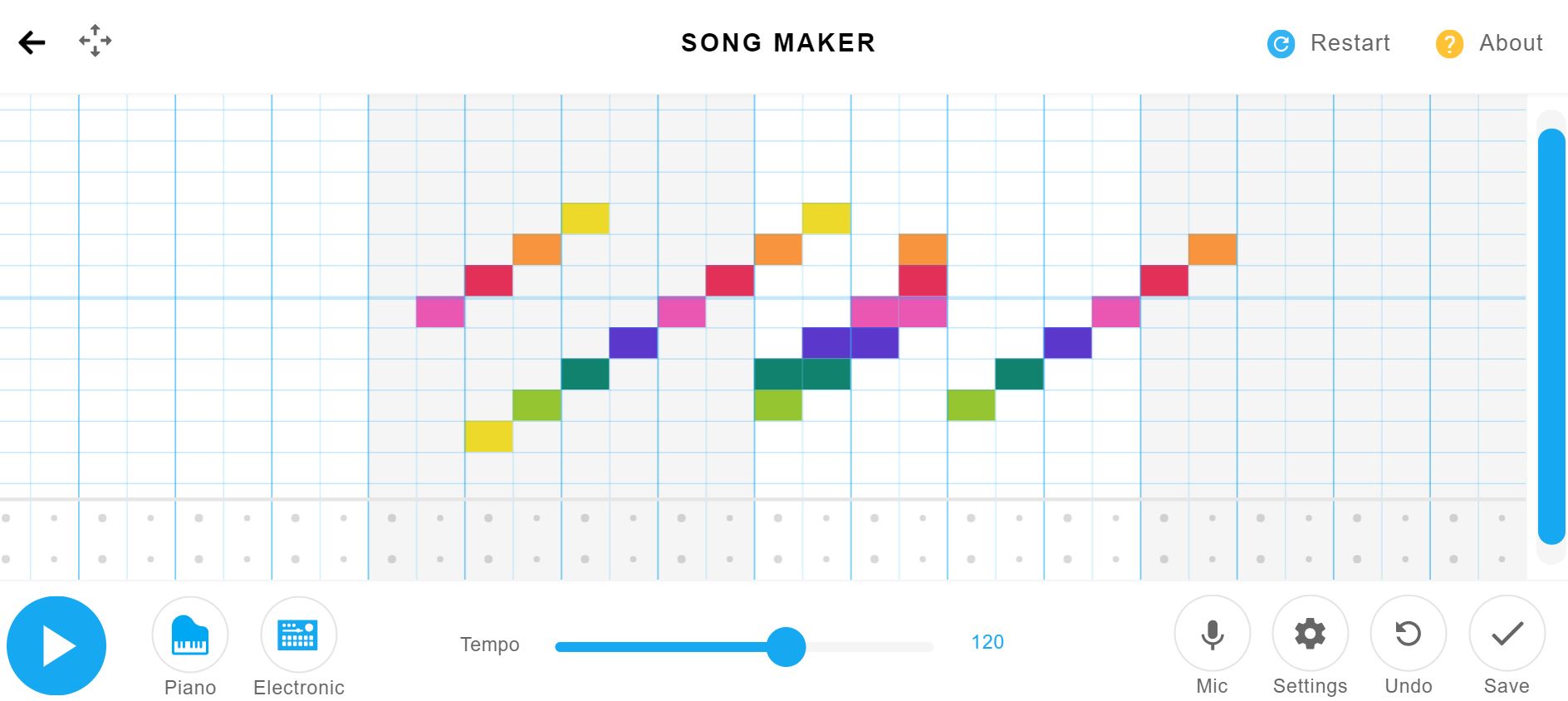With Google Creative Lab making its mark in the online, educational market, many new programs have emerged focusing on the creative sector. Chrome Music Lab is one of these programs, piloted in 2016, and it is continuing to evolve and develop through its open source platform. It was built using freely accessible web technology, meaning the code is available to the public and can continue to be edited and further developed. This program makes music learning easy and readily available to students, breaking down barriers that often exist in music learning due to lack of resources.
Features
Chrome Music Lab can be accessed on any device, from computers, to tablets or phones, and on Apple or Android devices. All one needs is access to the internet and they can search the program on any web browser. No login is required, and it is very easy and intuitive to use. Currently, there are 13 “experiments,” from ones that allow you to create different rhythms, write your own melodies, learn chords, or draw a picture that will then be transformed into sound.
Screenshot image taken from Chrome Music Lab’s homepage
The program breaks down barriers in music learning as access to an instrument is unnecessary and no prior knowledge of music or note reading is required to start creating. The program uses blocks and colors to represent different pitches and direction. In many of the experiments the user can sing into the microphone which will record the pitch and then notate it using blocks in the appropriate space. The focus is on visualizing sound and understanding the basics of music production. It is not a game, but rather a fun way to experiment with and discover the elements of music.
The most recently developed experiment is called Song Maker, which allows the user to compose their own piece. It is customizable and allows the user to choose the instrument, what pitch the chart starts on, what type of scale it is using, and how many beats there are per bar. Once the student is done creating their work there is an option to save it, which generates a link that can be copied or shared directly to social media. This is a useful feature for teaching, as compositions can be shared with the teacher or with other students. The shared work can continue to be added upon by other users, allowing for a fun, collaborative experience.
The Song Maker experiment
Application
There is a plethora of ways this program could be implemented into a classroom, many of which can be found on Chrome Music Lab’s Twitter account. It is a great entry level program that can build confidence through making. There are many applications for using the program beyond the music classroom. It can be integrated into STEAM activities as it connects music with technology—the rhythm experiment could supplement math lessons and be used to explore fractions, and the experiments on frequency or string length could be used in a science lesson. It could also serve as a useful tool for an arts organization, such as a symphony orchestra, in their educational programming. Since the experiments do not require any musical background, it could be used during a music discovery day that allows students to learn about different aspects of music or composition.
The rhythm experiment can be used to teach fractions and math skills
Pros:
You don’t need to make an account to use the program.
It can be used on any device, without having to download an app.
The program is free.
Cons:
It is a very basic production program and is mainly targeted for beginners.
The program does not teach any specific instrument or note reading, but rather a basic understanding of musical concepts.
Overall, Chrome Music Lab is a useful resource for music educators and there are a variety of ways it can be implemented into a lesson plan. Although there are many music apps available now, it has the competitive advantage of being used on a variety of devices and teaches a wide range of musical concepts. The layout is fun and easy to navigate, and the users can create without knowing anything about music beforehand.




